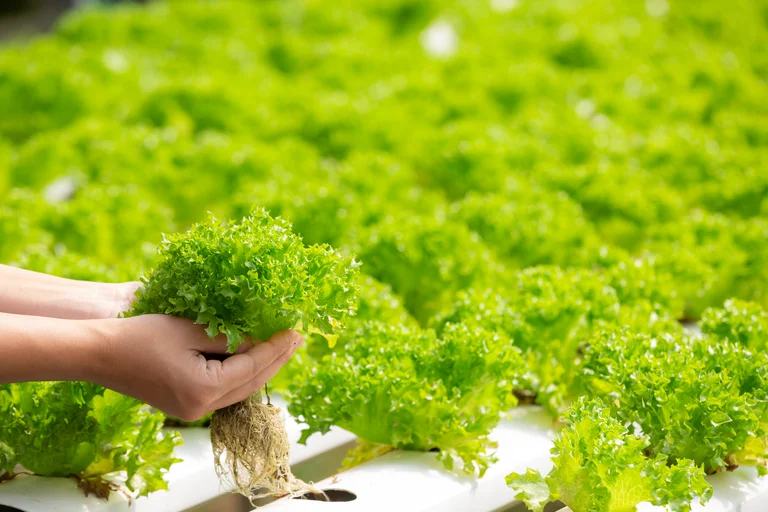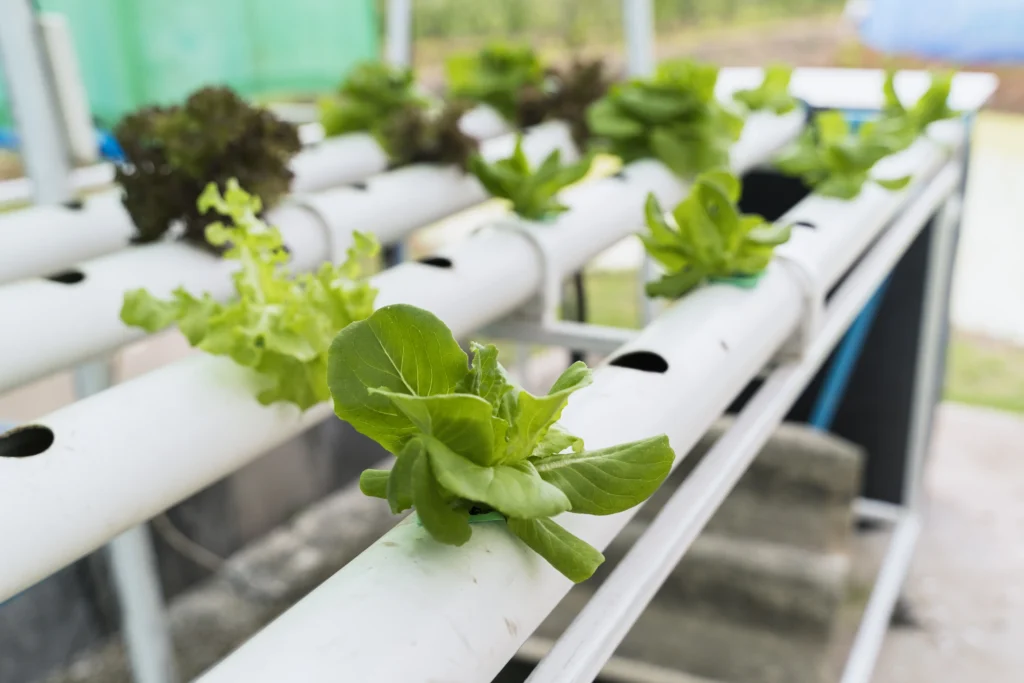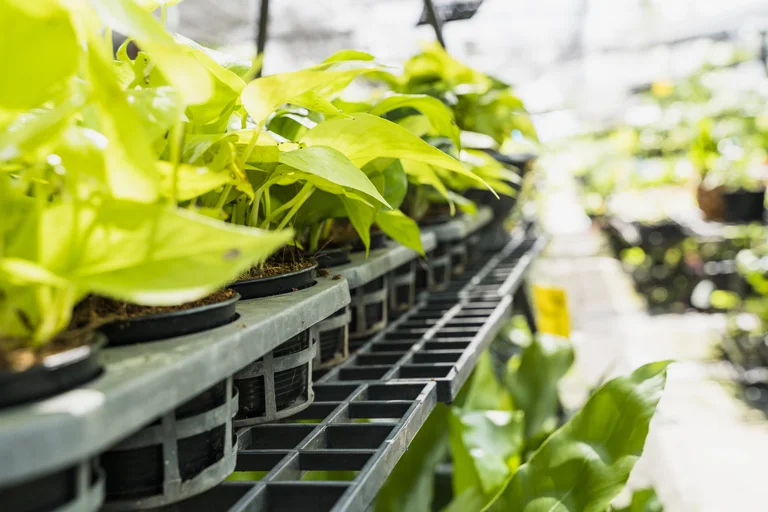
How To Start A Hydroponic Garden At Home A Beginner’s Guide
A hydroponic garden at home is a smart way to grow fresh food without soil. It might sound high-tech, but hydroponic gardening has quickly become one of the most exciting and efficient methods to grow your leafy greens and herbs indoors. Whether you live in a small apartment or have limited outdoor space, starting a hydroponic garden at home can help you grow leafy greens, herbs, and vegetables all year round. This simple DIY hydroponic setup makes it possible to grow food indoors without soil.
What Is a Hydroponic Garden?
A hydroponic garden is a system where plants grow in water instead of soil. Nutrient-rich solutions are delivered directly to the plant roots, providing everything they need to thrive. This method is not new—it’s been used for decades in space research and urban farming.
Even NASA uses hydroponic systems to grow plants in space because they’re efficient, clean, and require less water. According to the U.S. Department of Agriculture (USDA), hydroponics can use up to 90% less water than traditional soil gardening—making it a smart and sustainable way to grow food at home.
Why Choose Hydroponics at Home?
More people are switching to hydroponic gardening at home because it’s cleaner, faster, and perfect for urban living. Starting a hydroponic garden at home offers many benefits beyond saving space and water.
Faster plant growth:
Hydroponic systems deliver nutrients directly to the roots through water, allowing plants to absorb exactly what they need. This results in growth that’s often 30–50% faster than soil-based gardening. You’ll notice healthier, fuller plants that mature sooner and grow faster.
Growing all year:
With hydroponic gardening, you can grow fresh vegetables, herbs, and greens all year round, unlike traditional gardens that rely on the seasons. Any climate can benefit from a controlled indoor setup because changes in the weather won’t affect your harvest.
Less Mess and Fewer Pests:
You won’t have to worry about muddy hands or insects carrying dirt because there is no soil involved. Your plants have a better chance of thriving naturally because hydroponics provides a clean environment that reduces pests and diseases.
Effective Space Utilization:
If you live in an apartment, a small home, or a city setting, hydroponic systems are a perfect fit. You can grow a surprising variety of plants in compact containers or vertical setups—turning even a tiny corner into a thriving mini garden.
Hydroponics is becoming increasingly popular across the U.S. for these reasons. From rooftop hydroponic gardens in New York to indoor farms in California, people are embracing this sustainable, soil-free way of growing food at home.
Once you understand the basics of home hydroponic systems, it becomes simple to choose the ideal setup for your area and plants.
Types of Hydroponic Systems:

Before setting up your hydroponic garden at home, it’s important to understand the main types of systems available. Each one works differently but follows the same idea—providing plants with nutrients directly through water instead of soil.
- Deep Water Culture (DWC)
- Nutrient Film Technique (NFT)
- Wick System
- Ebb and Flow (Flood and Drain)
- Drip System Aeroponics
1. Deep Water Culture (DWC)
This is one of the easiest systems to start with, especially for beginners. The plants sit on top of nutrient-rich water, while their roots stay submerged below. An air pump keeps the water oxygenated so the roots stay healthy and strong.
2. Nutrient Film Technique (NFT)
In this setup, a thin stream of nutrient solution constantly flows over the roots, giving them steady access to water and nutrients. It works best for lighter plants like lettuce and herbs.
3. Wick System
The wick system is one of the easiest ways to start a hydroponic garden at home. It uses absorbent wicks to pull nutrients from the reservoir to the plant roots. It needs no electricity or pumps, making it low-maintenance and perfect for beginners or small indoor setups.
4. Ebb and Flow (Flood and Drain)
The nutrient solution is poured into the plant tray and then drained back into the reservoir to operate this system. In between cycles, it gives roots the ideal balance of air and nutrients. The ebb and flow method provides consistent, healthy growth for a range of plants.
5. Aeroponics
Aeroponics is a more advanced, high-tech style of hydroponics. In this system, the roots hang freely in the air and get misted with a nutrient-rich spray. This setup gives the roots maximum oxygen and often leads to faster growth. It’s so efficient that even NASA uses aeroponics for growing plants in space.
6. Drip System
One of the most popular hydroponic techniques is the drip system. It allows you greater control over watering by slowly dripping nutrient solution directly to each plant’s roots. it works well for both small and large setups.
What You Need to Set Up Your Hydroponic Garden:
You don’t need a huge budget or a fancy greenhouse to get started. With just a few basic supplies, you can easily set up a simple hydroponic garden right at home.
1. Container or Reservoir: Holds the nutrient solution (can be a bucket, tub, or plastic container).
2. Net Pots: small pots for plants that allow their roots to hang in water.
3. Growing Medium: Instead of using soil, use materials like perlite, coco coir, or clay pebbles.
4. Air Pump and Air Stone: To maintain the water’s oxygen content, which is necessary for healthy roots.
5. Light Source: Your plants need light for photosynthesis to grow strong and healthy, so use LED grow lights or a sunny windowsill.
After everything is in place, all you need to do is change the nutrient solution every two weeks and keep the pH level between 5.5 and 6.5.
Many beginners start small with a home hydroponic setup before expanding to a larger system later.
Step-by-Step Guide: How to Start a Hydroponic Garden at Home
This step-by-step guide will help you create your own hydroponic garden at home, even if you’re a beginner with no prior gardening experience.

1. Choose Your Hydroponic System:
Begin by selecting a system that matches your space, budget, and experience level. For beginners, the Deep Water Culture (DWC) or Wick System is ideal because it’s easy to set up and requires little maintenance. As you gain experience, you can move on to more advanced systems like ebb and flow or aeroponics.
2. Pick the Right Location:
Find a bright area in your house where your plants will receive 12 to 16 hours of light per day. LED grow lights are ideal for a small indoor space, a sunny windowsill, or a balcony. For healthy growth, make sure the temperature stays constant between 65°F and 75°F (18°C and 24°C).
3. Prepare Your Reservoir:
The heart of your hydroponic system is the reservoir. It contains the nutrients and water your plants need to grow. As directed by the product’s instructions, fill it with filtered, clean water and add a hydroponic nutrient solution. All of the required minerals, including calcium, potassium, and nitrogen, are present in these solutions.
4. Add the Growing Medium:
Instead of soil, hydroponic systems use media like clay pebbles, coco coir, or perlite to support the plants. These materials help retain moisture while allowing roots to get enough oxygen. Fill your net pots with the chosen medium before placing your seedlings inside.
5. Set Up the Air Pump and Light Source:
An air pump is essential to maintain the oxygenation of the nutrient solution. Plants may wilt, and their roots may suffocate if there is insufficient oxygen. If natural sunlight isn’t enough, you can also install LED grow lights. As the plants grow, adjust the height of the lights, which should be 12 to 18 inches above the plants.
6. Place Your Plants:
Carefully transfer your seedlings or young plants into the net pots so that their roots can touch or slightly hang into the nutrient solution. Make sure each plant has enough space to grow. It’s better to start with 3–5 plants initially instead of overcrowding your system.
7. Monitor pH and Nutrient Levels:
One of the most important parts of hydroponic gardening is maintaining the right pH. Maintain a pH of 5.5 to 6.5 so that your plants can effectively absorb nutrients. A digital tester can be used to measure pH levels. Additionally, check the nutrient strength once a week and replenish your solution as needed.
Which Vegetables Work Best at Home?
Some plants grow faster and easier in indoor hydroponic gardens, especially leafy greens and herbs.
- Lettuce
- Spinach
- Basil
- Mint
- Kale
- Strawberries
- Tomatoes
These plants have shallow roots and quick growth cycles and respond well to hydroponic systems.
How to Expand Your Hydroponic Garden:
After mastering a small setup, you can scale up. Many U.S. home gardeners are now using vertical hydroponic systems to grow more in less space. Companies like AeroGarden and Lettuce Grow sell ready-to-use hydroponic towers that fit easily in kitchens and patios.
Your house can become a miniature indoor farm by connecting your system to smart sensors that regulate water and nutrients automatically.
The Future of Hydroponic Gardening:
Hydroponics is the way of the future for sustainable agriculture, not just a fad. Hydroponic systems provide a fresh, local food option with little environmental impact as the world’s population rises and urban areas grow.
Major cities in the U.S. are already turning to hydroponic farms to grow food indoors, which helps save land and water while increasing crops more quickly. For home gardeners, this means you’re contributing to a global shift towards smarter, cleaner, and more sustainable food production.
As more people discover how easy hydroponic gardening at home can be, the trend is rapidly growing across the U.S.
Starting a hydroponic garden at home is easier than most people think. It’s a blend of science, sustainability, and simplicity—perfect for anyone who loves gardening but wants to skip the soil and mess.
Read more related articles> https://www.climatechallange.com/the-future-of-home-gardening-vertical-hydroponic-system/
FAQS
Q1. Is a Hydroponic Garden At Home expensive to start?
Ans. You can build a small Hydroponic Garden At Home for under $50–100 using simple containers & basic nutrients.
Q2. Can I grow any plant hydroponically?
Ans. Almost any plant can grow hydroponically, from herbs to fruiting vegetables. However, leafy greens, herbs, and small fruits like strawberries are the easiest for beginners. Once you master the basics, you can experiment with tomatoes, peppers, or even cucumbers.
Q3. How much electricity does a hydroponic garden use?
Ans. With LED grow lights, a small hydroponic garden at home uses nearly the same amount of electricity as a laptop or a small household fan. You can grow fresh food with this energy-efficient setup that won’t significantly increase your electricity costs.
Q4. How often do I change the water in my system?
Ans. Change the nutrient solution every 10–14 days to keep your plants healthy and prevent the buildup of salts.